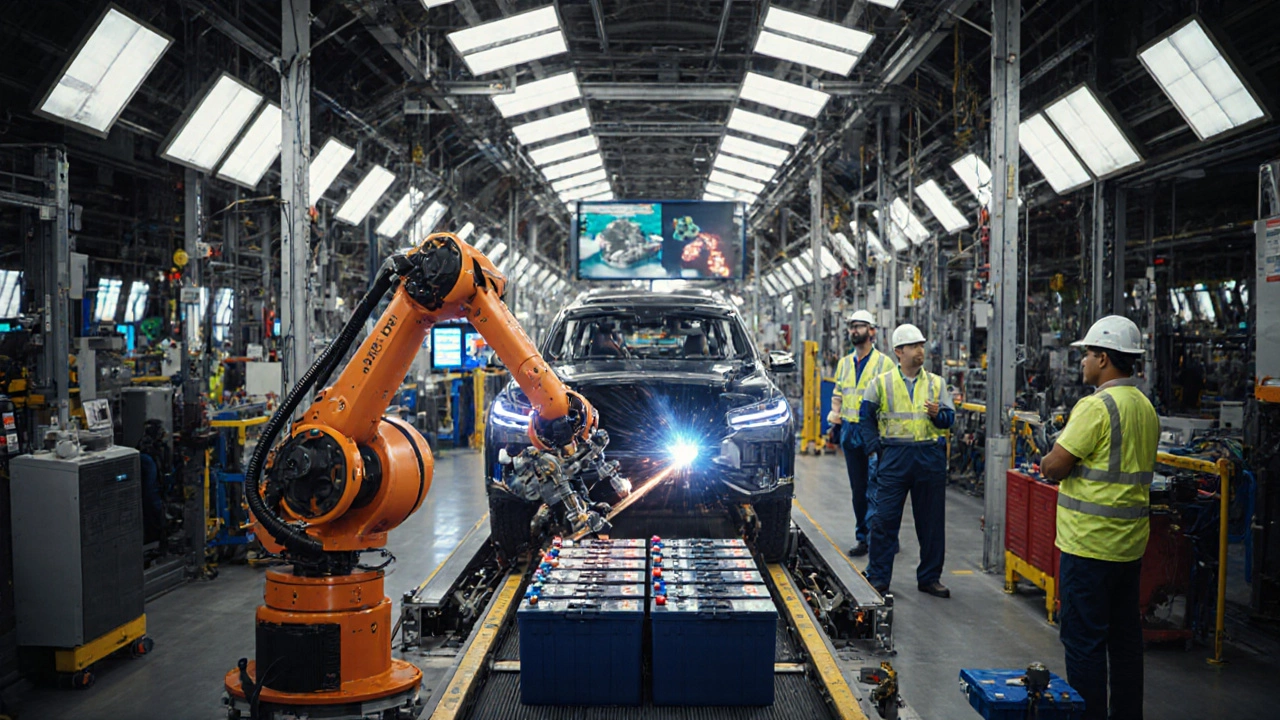Supply Chain in Auto Parts: How Your Car Parts Get to You
When you order a new supply chain, the network of manufacturers, warehouses, shippers, and distributors that moves parts from factories to your driveway. Also known as automotive logistics, it’s the invisible system that decides whether your brake pads arrive in two days or two weeks. It’s not just about shipping boxes—it’s about timing, reliability, and cost. A broken link in this chain means your car sits in the driveway, not on the road.
The auto parts supply chain, the complex flow of components from raw materials to finished parts installed in vehicles starts with metal mines, rubber plantations, and microchip factories thousands of miles away. Then it moves through assembly plants, cross-dock centers, and regional distribution hubs. Each step adds time, cost, and risk. A delay in Taiwan can mean a delay in your transmission rebuild. A factory fire in Germany can mean your alternator is backordered for months. This isn’t theory—it’s what happened in 2021 when the pandemic choked global shipping lanes, and everyday drivers waited weeks for simple parts like oxygen sensors or headlight bulbs.
Not all parts travel the same way. OEM parts from Ford or Toyota move through tightly controlled channels with strict quality checks. Aftermarket parts? They often take a wilder route—bigger warehouses, cheaper shipping, fewer inspections. That’s why two identical-looking brake rotors can have wildly different lead times and prices. The vehicle parts logistics, the planning and movement of automotive components across borders and storage points isn’t just about getting parts to you—it’s about getting the right part, at the right price, at the right time. And that’s where some shops cut corners: they stock cheap imports with no traceability, hoping you won’t notice the difference until your engine fails.
What you see on the website—"In Stock," "Ships Today"—is the tip of the iceberg. Behind that label is a web of suppliers, customs brokers, freight forwarders, and warehouse workers. The best auto parts sellers don’t just sell parts—they manage this entire system. They know which suppliers deliver on time, which ones use counterfeit packaging, and which ones cut costs by skipping stress tests. That’s why some stores can offer the same part for $20 less but still ship it faster. They’ve built better relationships, not cheaper products.
And then there’s the human side. A single recall on a faulty airbag sensor can ripple through hundreds of thousands of vehicles, forcing warehouses to pull inventory, repackage parts, and notify owners. That’s not just a technical problem—it’s a logistical nightmare. The car part sourcing, the process of identifying and securing reliable suppliers for automotive components isn’t just about finding the lowest bid. It’s about trust, transparency, and track record. The parts you buy today were likely made by someone in a factory you’ll never see, shipped by a company you’ve never heard of, and handled by warehouse staff working double shifts to keep your car running.
What you’ll find in the posts below aren’t just guides on brake pads or battery replacements—they’re stories about how the system works. From how truck bed liners get shipped across the country to why EV battery timelines depend on rare earth mineral imports, every article ties back to the same truth: your car’s reliability starts long before it rolls off the lot. You don’t just buy parts—you buy into a global network. And knowing how that network moves helps you make smarter choices, avoid delays, and spot when something’s off.

How Automobiles Drive Economic Growth Around the World
- 9 Comments
- Nov, 1 2025
Automobiles drive economic growth by creating millions of jobs, fueling supply chains, funding public services, and enabling mobility. From manufacturing to exports, cars shape national economies and lift communities worldwide.